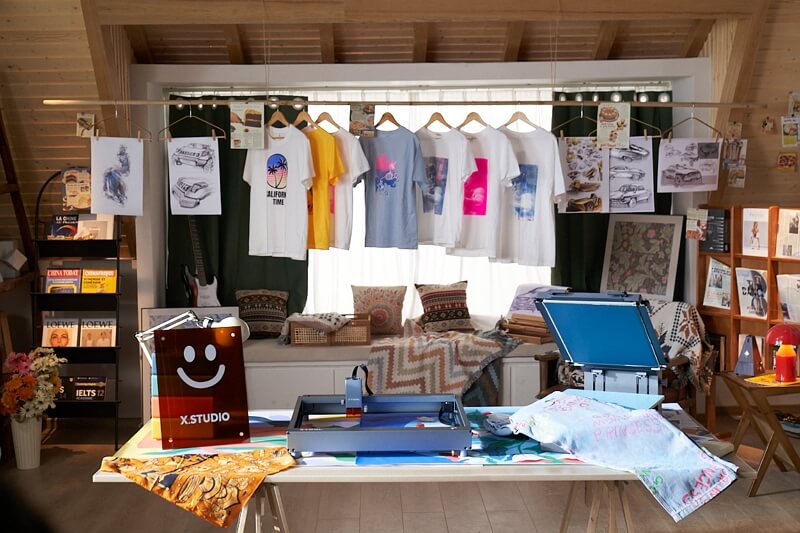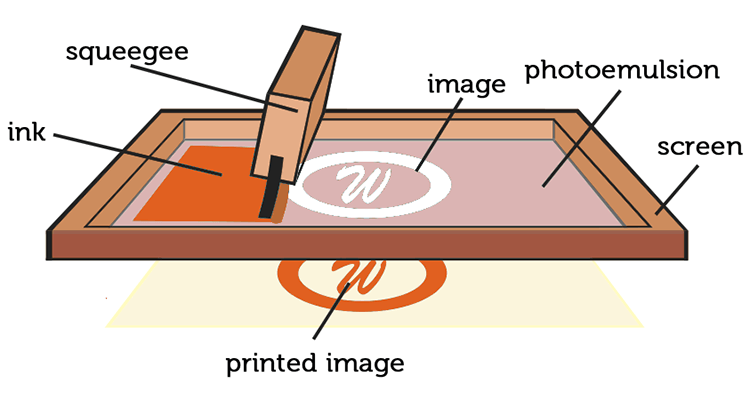More About Tx Tees
More About Tx Tees
Blog Article
Things about Tx Tees
Table of ContentsThe Main Principles Of Tx Tees The 10-Second Trick For Tx TeesTx Tees Can Be Fun For EveryoneTx Tees - The FactsThe Best Guide To Tx TeesThe Tx Tees IdeasTx Tees for Dummies
That brings your total amount to around $1,900 gross and shipping. Include up other costs, like the variety of utilities it requires to run the shop and the cost of ink and solution per style. t-shirt printing. Take the print below. This is a one-color photo, so the expense of ink per shirt is about 20 cents.The solution must just be a few cents considering that you 'd just require to coat one screen for this job. Typically, printers try to make up to 45% profit on a print job.

With DTF, you can publish a handful of t shirts, or just one. Use the very same calculator as the area above to compute just how much revenue you 'd use DTF transfers. Compare the prices and revenues to whichever method talks finest to your setup and procedure. Both screen printing and DTF have their niches worldwide.
Tx Tees Can Be Fun For Everyone
The very best method to recognize? Ask around and see what print shops like yours are doing. t-shirt printing. Try both out and see which you like much better
When you're picking what sort of printing method to utilize for printing your art work styles on your garments, it is very important that you know the differences between these two methods so you can make best use of outcomes while reducing expenses. Screen printing is the most frequently made use of strategy for publishing layouts on fabrics.
DTG printing is also referred to as area or straight to garment printing since it publishes just what is needed instead of making a screen as screen printers do. https://www.huntingnet.com/forum/members/txtees02.html?simple=1#aboutme. Screen printing functions by screen filler squeegee display printing ink screen mesh display, then moving the image to garment making use of heat and/or stress
The DTG printer uses unique dye-sublimation inks that are used into a pre-designed photo by a digital printing system. The inks enter into the textile, allowing for vivid colors and phenomenal detail. It's additionally called place or direct to garment printing since it publishes only what is needed rather than making a screen as screen printers do.
Tx Tees Can Be Fun For Anyone
Initially, it's much quicker - you can publish a fullcolor image in minutes, instead of hours for display printing. Second, there's no established up time or costs involved - you can print any type of style you such as, without having to develop a display. Third, there's no waste - due to the fact that display printers display print one layout at once, they need to evaluate each shade individually.
The paper is extremely costly and can only be utilized once. Once it's printed on, it needs to be discarded. - The initial acquisition rate is reduced than the ahead of time financial investment of DTG printers- You can print multi-color styles one screen at a time rather of needing to print each color separately like DTG printing.

Getting The Tx Tees To Work
However, as opposed to making use of screen mesh as screen printers do, dye sublimation printers make use of laser technology to transfer your pictures onto garments or paper. A warmth process transfers the dye from its solid-state straight right into the gas stage which in turn merges it onto textile substratums when they are rapidly heated to heats under high stress.
Sublimation printing is eco-friendly. It utilizes less water than screenprinting, and since it does not entail using hazardous solvents, it's risk-free for all kinds of garments. The color sublimation inks are additionally odorless when cured, unlike screen printers that use damaging chemicals throughout the screen printing process that leave behind an unpleasant odor.
They likewise save money on expensive devices like exposure systems considering that color sublimation printers don't need a UV exposure system or a flash remedy oven that is usually utilized in screen printing (custom monograming). What is straight to garment printing (DTG Printing)? DTG printing is an electronic screenprinting procedure that prints directly onto fabric making use of specialized inkjet printers
Indicators on Tx Tees You Should Know
DTG printing offers several benefits over traditional screenprinting, consisting of the capability to print photo quality photos, higher color vibrancy, and the capacity to print layouts on darker materials. DTG printers work by heating up the textile ink till it develops into a gas. The gas then penetrates the material, bonding with the fibers to develop a permanent print.

Display printers just prepare their screen then start publishing till they lack item or ink.- There is a vast array of skilled screen printers all over the globe, which can be handy for newbies. - It's a slower procedure - screen printers typically have to wait for the ink to completely dry prior to they can print the next shade- Screen printers require manual labor, so there's a greater discovering curve and it takes longer to generate a top quality design- Screen printing isn't as exact as DTG printing, so you may get some "blood loss" of colors from one part of the photo onto one more if not done properly.
Tx Tees Fundamentals Explained
Instead of making use of screen mesh as display printers do, color sublimation printers use laser modern technology to additional resources transfer your pictures onto garments or paper. A warmth process moves the color from its solid-state directly right into the gas stage which in turn integrates it onto fabric substrates when they are swiftly heated to heats under high stress.
Sublimation printing is environmentally friendly. It makes use of much less water than screenprinting, and because it doesn't entail making use of damaging solvents, it's secure for all kinds of clothing. The color sublimation inks are additionally odorless when treated, unlike display printers that use damaging chemicals throughout the display printing process that leave behind an unpleasant smell.
They also conserve cash on pricey equipment like exposure systems given that dye sublimation printers don't need a UV exposure system or a flash treatment stove that is generally utilized in screen printing. What is straight to garment printing (DTG Printing)? DTG printing is an electronic screenprinting procedure that publishes straight onto textile making use of specialized inkjet printers.
Tx Tees for Beginners
DTG printing offers many advantages over typical screenprinting, consisting of the capability to print photographic top quality photos, higher color vibrancy, and the ability to print layouts on darker materials. DTG printers work by heating the fabric ink up until it becomes a gas. The gas after that penetrates the fabric, bonding with the fibers to create an irreversible print.
Report this page